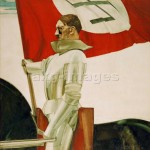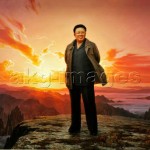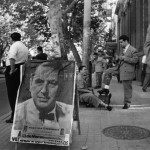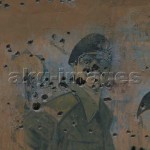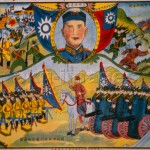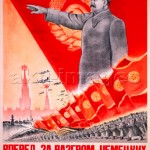The power of personality

The two men sitting opposite me on the southbound Northern Line train last night had possibly had a few too many drinks. Or maybe they were just naturally loud and slurring. Either way, it was impossible to ignore the conversation they were having about Kim Jong-il. Looking at a photograph of North Korean mourners in a copy of the Evening Standard, one said to the other:
“It’s incredible, just look at them all wailing!”
“Nah,” replied the other. “What you can’t see in that photograph are the ten men with AK-47s behind the mourners, forcing them to cry.”
“I don’t agree,” the first man continued. “It looks real, they’re really upset by his death. Can you imagine this country if the Queen died? Our reaction would be nothing like that, no one would be crying in the streets like that. That man had some power.”
Ever since the death of Diana, Princess of Wales, and the resulting mass grief, I have tried not to second-guess the British public’s reaction to tragedy, but I do disagree with the first man’s comment about the death of the Queen: I think we would see a tremendous outpouring of anguish from most people in the UK.
However, it certainly is true that it would not – could not – be as extreme as what is happening in North Korea at the moment. It’s the perfect example of a truly successful cult of the personality. You can argue that there have been personality cults built up around rulers from the earliest recorded days: from the god-like Pharaohs of Egypt right up to the imperial extravagance of Napoleon I. You could even see the dissemination of portraits of Elizabeth I as Virgin Queen as a Tudor equivalent.
It seems to me, though, that it’s within the last hundred years that we have truly seen a rogues gallery’s worth of leaders harnessing the press, art and photography to shape an idealised image of themselves to their followers, from Stalin to Peron, Sun Yat-Sen to Saddam Hussein.
We have an extraordinary collection of images of Kim Jong-il in the archive courtesy of the photojournalist Alain Noguès who travelled in North Korea in 2000. Some of the paintings of the “supreme leader” that Noguès shot are staggering in their bombast: Kim standing strong against crashing waves; Kim smiling in the sunrise; Kim astride a white horse with his father and mother.
The paintings of Kim Jong-il reminded me of an excellent article by Eric Gibson I read a few years ago on the Wall Street Journal website, “Why Dictators Love Kitsch“. One of the points Gibson’s article makes is that this kitsch realist art is often an assembly-line production, art stripped of any artistic depth created purely to glorify the sitter in the most superficial (and largest) way possible.
The portraits of Kim Jong-il are not going to win the Turner Prize any time soon, but what interests me is how a pedestrian work of art can become totemic, wholly through the personality cult of the person it represents. The painting that comes to mind immediately is Hubert Lanziger’s equestrian portrait of Hitler (which Eric Gibson compares in his article to photos of Vladimir Putin horseriding). The Lanzinger portrait is, solely as a work of art, hideous: flat, with some half-baked foreshortening and metal armour which looks more like polyester satin. Look carefully at Hitler’s face and you’ll see the stab wound inflicted on the canvas by an Allied soldier at the end of the Second World War. A second-rate painting that nonetheless caused a violent reaction in the viewer, a second-rate painting still kept behind lock and key by the US military, a second-rate painting whose power comes not from the artist but from the sitter. These kitsch portraits of Kim Jong-il will no doubt soon be joined by equally kitsch portraits of the “Great Successor” Kim Jong-un and another cycle of totalitarian realist art will begin.
